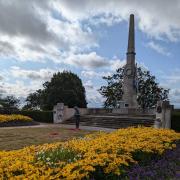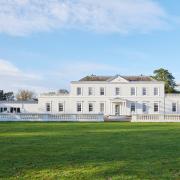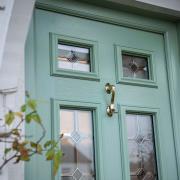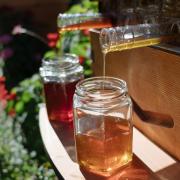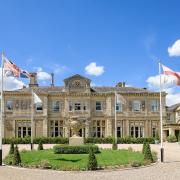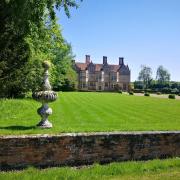Creeksea Place is a stunning 15th century Elizabethan manor house located close to coastal Burnham-on-Crouch. Arthur Harries, who was later appointed High Sheriff of Essex in the year of 1589 commissioned the construction of the elegant and imposing Creeksea Place during the reign of Elizabeth in 1569. He pledged allegiance to the Queen promising to bring one hundred men to defend the monarchy if civil unrest ever occurred. Arthur Harris was an important man - he was Justice of the Peace and was tasked with the role as commissioner of investigating piracy along the Essex coast. He knew the area well as he originally came from Prittlewell in Southend. No less than five generations of the Harries family lived at Creeksea Manor until it fell into the custodianship of the Mildmay family when one of the Harries daughters married Lord Mildmay.
Like Arthur Harries, Lord Mildmay was an important man - he was MP for Maldon several times and Charles I appointed him as Keeper of the Crown Jewels which would have been a similar role to Chancellor of the Exchequer. This would have seen Lord Mildmay in charge of finances, overseeing taxation and borrowing. His allegiance to the king was not long standing - indeed some say that Lord Mildmay was allegedly one of the twelve men who signed the death warrant that saw King Charles I executed. Needless to say he was on the Parliamentarian’s side during the Civil War. Lord Mildmay was not charged with regicide (the killing of a monarch) by Charles II but this did not stop him being exiled to Tangier where he died four years later and was stripped of his knighthood. Prior to his exile Lord Mildmay was arrested at Creeksea and had to spend the night in the Tower of London to mark the anniversary of the execution of Charles I. The Mildmay episode does not seem to have been a happy one - there are even rumours that Mildmay’s new bride was not happy about the union and killed herself as a result. Her ghost has supposedly been seen wandering from the lawn down to the lakes giving her the name ‘The Lady of the Lake’.

Creeksea Place is rife with legends: it is said to be the birthplace of Anne Boleyn, Queen Elizabeth I’s mother and there are rumours of Anne’s ghost wandering around an old cottage at Cricksea Ferry. The Queen herself is said to have met her soldiers from Rochford through tunnels. Though vast Elizabethan drains encrusted with oyster shells have been uncovered, no tunnels have been found and incidentally there are no cellars at Creeksea Place. The Great Sword of Creeksea with original Tudor Rose detailing does not reside at the house any more but it did for three hundred years and due to its sheer size, no doubt, it was said to have warded off anyone who came to attack the house.
As Maldon Nub News explains, Creeksea Manor Place is a ‘much modified manor house’. Complete with mullioned windows, chimney stacks with octagonal shafts and a moulded oak door frame the Elizabethan features at Creeksea Place are unmistakable. Originally the house started out as a three or four winged house between around a central courtyard. In the late seventeenth century the North wing was demolished thanks to the unpopular imposition of Window Tax. The North wing would have stood where the current car park now sits. The South Wing was demolished in 1740 along with some garden walls. The bricks were sold (and possibly used to build Creeksea Lane in London) and a new wing was built on the foundations of the East Wing.

A rich businessman named William Rome who owned a string of upmarket coffee shops in London was the next notable owner of Creeksea Place taking issue of the house at the turn of the century. Rome grew oysters in the River Crouch and sold them in his London cafes. Back then the estate was much larger and stretched down to the river and all the way north to the Maldon Road. William Rome allowed Creeksea Place to flourish under his careful eye and rebuilt the South Wing in 1900. He filled the house with beautiful objets d’art and had grand designs for the garden including the planting of many trees. Indeed, eighty years later the BBC’s 1981 adaptation of Great Expectations was filmed in the well preserved orchard and walled gardens at Creeksea Place. Sadly William Rome passed away in 1909 and this golden era at Creeksea Place came to an end.
The next owner was a German man who, on news of the outbreak of World War I was told in no uncertain terms by the villagers of Burnham-on-Crouch that his presence was no longer welcome. In 1914 they came out at night carrying torches to signal for him to leave. He did. During the Second World War Creeksea Place and its estate was requisitioned by the Ministry of Defence and renamed HMS Saint Matthew where they trained Marines and Commandos. It was a good spot for Marine training if ever there was one with plenty of scope and space to practise beach landings on the River Crouch which, by all accounts they took full advantage of.

Today Creeksea Place is owned by Jon-Paul Bertorelli Lindsey. As was the case with the Harries family, Creeksea Place has now been in the custodianship of the Bertorelli family for five generations. The Bertorelli family have restored the historical house with the help of Harries descendants from the USA, of which, apparently there are many! Today Creeksea Place operates as a wedding venue and holiday let, The Cottage which is available to rent and forms the eastern wing of the house. There are occasional events open to the public and by all accounts the grounds of 36 acres are simply stunning.






